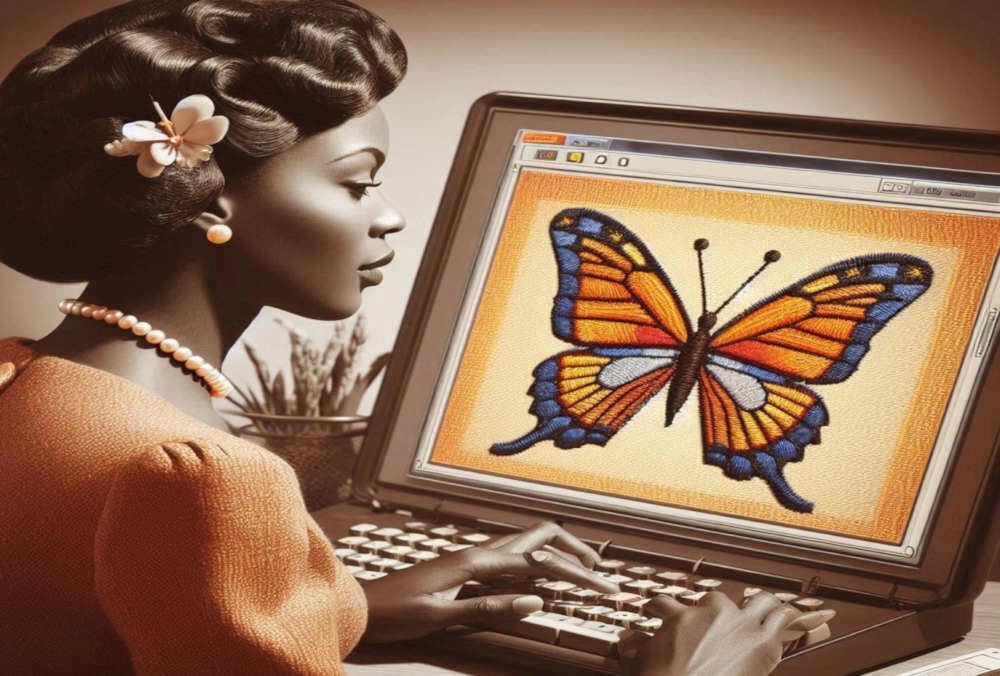In the world of embroidery, the design is everything. It’s the heart and soul of your project, the blueprint that guides your needle and thread to create stunning works of art.
But where do you find these design files? And more importantly, how do you ensure they’re of the highest quality?
Not all embroidery design files are created equal. The way the design is planned and digitized can tremendously impact the look and the final sew-out.
So, if you’re considering buying designs, it’s crucial to know where to find the best embroidery design files and what to look for before investing your money.
In this post, we will not only explore the best places to buy embroidery designs but also delve into what you need to understand about designs before you purchase them.
Whether you’re looking for files to sew out a floral pattern on a denim jacket or to create a personalized gift for a friend, we’ve got you covered.
Let’s get started on this exciting journey!
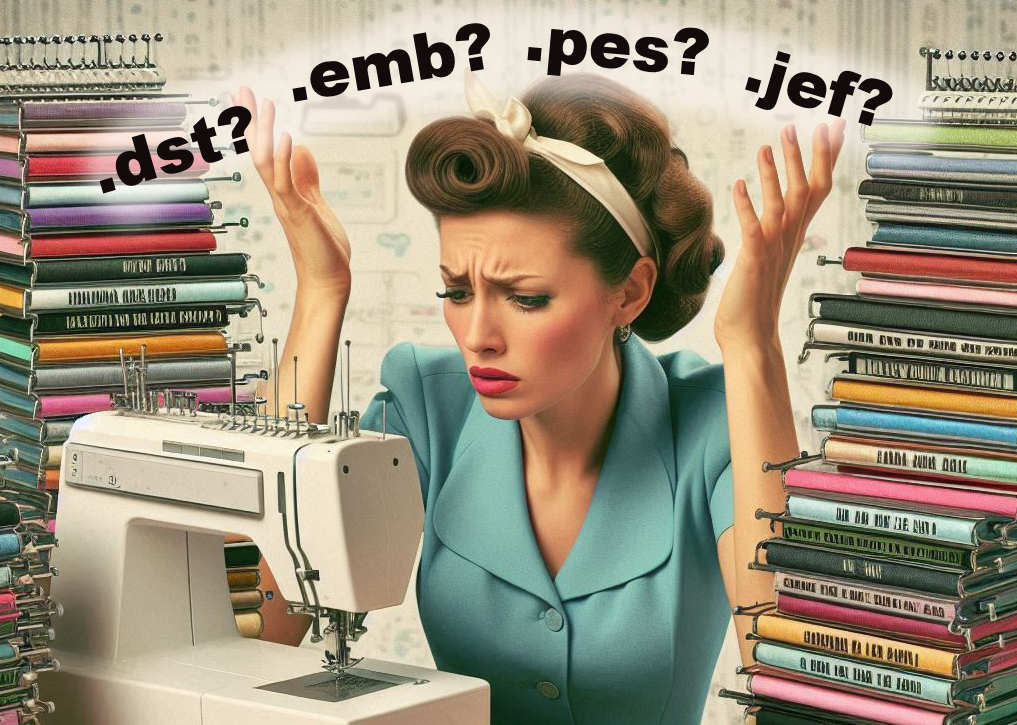
What are Machine Embroidery Design Files?
I understand that my audience is diverse, so please bear with me as I cover the basics. Whether you’re new to machine embroidery designs or a seasoned veteran, it’s always good to revisit the fundamentals.
Machine embroidery files are essentially a set of instructions for an embroidery sewing machine. These instructions are encoded in a digital format that the machine can interpret. While there are numerous embroidery file formats, they generally fall into three main categories:
Native File Format
This is the blueprint of the design and serves as the initial stage in converting an embroidery design into a digital image. This type is only readable by the digitizing software.
Expanded File Format
Expanded file formats include embroidery software with extensions such as .dst or .esp. These are a step up from the native file format as they are readable by embroidery machines. Expanded file formats contain more information that can be read by embroidery machines. However, not all embroidery machines can read all expanded file formats.
Each embroidery machine manufacturer typically uses a specific file format or a set of file formats that their machines can read. For example, Brother machines use .PES files, Janome machines use .JEF files, and Tajima machines use .DST files.
While expanded file formats are more universally readable by embroidery machines than native file formats, they are not universally readable by all machines. It’s important to know which file formats your specific embroidery machine can read.
So, it’s best to purchase files that are compatible with your specific machine. For instance, .pes files for Brother machines and digitizing software, or .exp files for Melco machines and products.
Machine-Specific File Formats
These are specific to different brands of embroidery machines. Examples include JEF, PES, HUS, and XXX for Janome, Brother, Husqvarna, and Singer, respectively. Here are some of the most widely used embroidery file formats:
DST (Tajima): DST, short for “Data Stitch Tajima,” is one of the most widely used embroidery file formats3.
PES (Brother): PES is the native file format for Brother embroidery machines.
EXP (Melco): EXP files are used with Melco embroidery machines.
JEF (Janome): JEF files are specific to Janome embroidery machines.
XXX (Singer): XXX files are associated with Singer embroidery machines.
EMB: This is the native design format for Wilcom’s Embroidery Studio and Hatch Embroidery.
Remember, not all embroidery files are readable by all embroidery machines. Different manufacturers use different languages to translate their designs into digitized embroidery files. These are known as embroidery file formats.

Considerations for Machine Embroidery Design Files
Before I provide a list of embroidery sites to explore, it’s crucial to consider several factors before investing in design files. The preliminary work involves understanding the type of embroidery you wish to create and the fabric or items you plan to embellish.
Consideration #1 – Design Use
The intended use of your embroidery design is a significant factor. For instance, designs for hats differ from those for shirts and towels.
If a design is primarily digitized for a hat, it will require different pull compensation than that for a polyester shirt.
Consideration #2 – Embroidery Design Complexity
The complexity of your design is another important aspect. For example, if you have an image of a cat wearing a coat with 50 different colors, consider the number of thread changes and cuts your machine will need to accommodate.
In addition to these considerations, you might also want to think about the size of the design, the type of stitches used, and the digitizing software compatibility.
Consideration #3 – Fabric Type
Consider the type of fabric on which you’ll be embroidering. Different fabrics, such as cotton, denim, and silk, may necessitate adjustments in stitch density and type. Also, there may be pull compensation problems you may want to consider before purchasing a design.
Consideration #4 – Your Machine’s Capabilities
Familiarize yourself with the capabilities of your embroidery machine. Certain designs may necessitate specific hoop sizes or stitch counts that your machine can accommodate.
Consideration #5 – Check the Quality and Detail
Examine the quality and level of detail in the design. High-quality digitized files result in cleaner, more professional-looking embroidery.
Consideration #6 – Stitch Count and Thread Cuts
Pay attention to the stitch count, number of thread cuts, and color changes. If you’re creating gifts for a group of people, you’ll want to minimize the number of color changes and cuts. If the stitch count is high, you might want to consider a design with fewer stitches.
These are just a few factors to consider when purchasing machine embroidery files. Now that we’ve discussed what to look for when buying, let’s explore the various online platforms where you can purchase these files.
The Best Places to Get Embroidery Designs
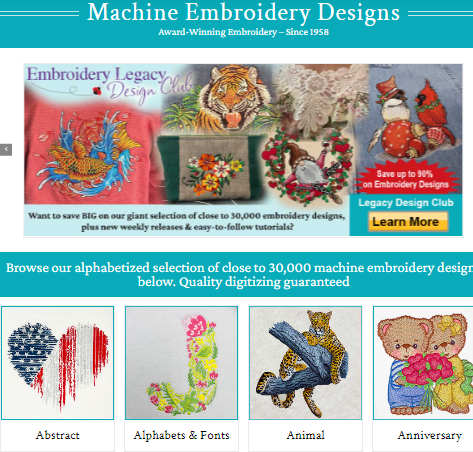
#1 John Deer’s Embroidery Legacy – My Personal Favorite
John Deer’s Embroidery Legacy is highly regarded in the embroidery industry for several reasons.
With over 60 years of embroidery excellence, John Deer’s Embroidery Legacy combines traditional embroidery wisdom with modern technology. The Deer family has been involved in machine embroidery for five generations.
They offer more than 30,000 embroidery designs. These designs are appreciated for their creativity, detail, and adaptability to various embroidery projects.
He has also developed the Design Doodler software, which allows users to transform their designs into stitches. This software is user-friendly and offers a variety of stitch types and editing options.
Legacy Embroidery places a strong emphasis on education. His YouTube channel provides valuable tutorials on topics like embroidery digitizing and essential techniques for embroiderers. This focus on education helps users not only use their designs but also understand the process behind creating them.
Users have expressed satisfaction with the quality of designs, the educational resources provided, and the user-friendly software.
My Personal Take on John Deer’s Embroidery Legacy
I was so happy to have found the Embroidery Legacy website, because for years I tried to learn how to properly digitize embroidery designs, and did not have a clear path to learning this skill.
I have taken at least 3 of his digitizing courses and they are excellent. Once you take these courses, not only will you know how to digitize much better, but you will also know what to look for in a design.
Two of the things you need to look for in a design are the under sewing and the number of jumps from one part of the design to another. John Deer’s designs have been meticulously planned so that the designs have the proper amount of under sewing and the least amount of thread cuts and jumps.
Not only that, but many of these designs are also digitized in a way that the stitches are sewn with the exact same millimeters in between each stitch. This means that your machine will have less stress on it and fewer thread breaks when sewing out the designs.
To sum it up, the quality of John Deer’s embroidery designs, the educational resources, and the innovative software contribute to the positive reputation of John Deer’s Embroidery Legacy in the embroidery community.
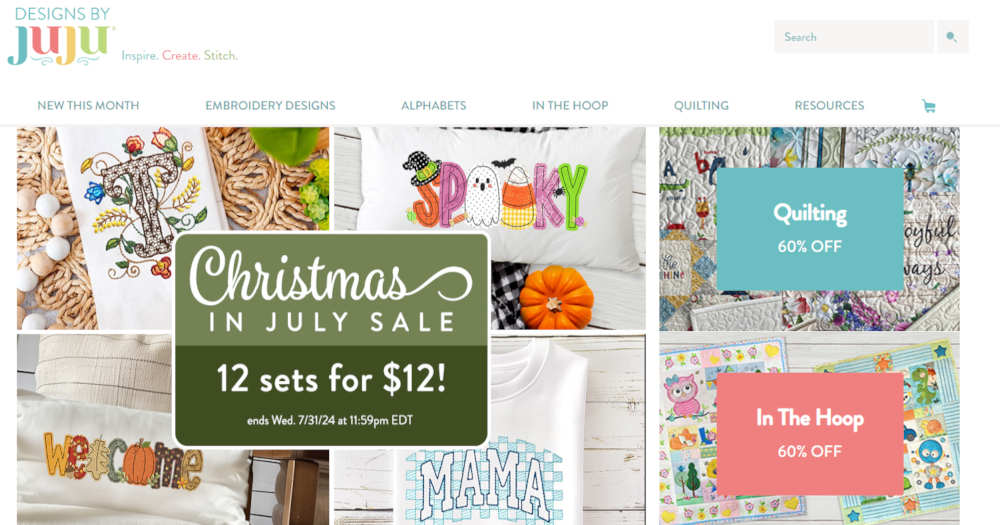
#2 Designs by Juju – A Treasure Trove of Embroidery Designs
Designs by Juju is a haven for embroidery enthusiasts, offering an extensive collection of meticulously crafted designs. Customers consistently praise the quality, creativity, and thoughtful planning behind these embroidery files. Here’s what sets Designs by Juju apart:
Each design undergoes manual digitization with great care. State-of-the-art software ensures precise digitization, minimizing unnecessary jump stitches. The result? Designs that stitch out beautifully, with proper under sewing and minimal thread breaks.
Whether you’re a seasoned embroiderer or a beginner, Designs by Juju caters to all skill levels. The uniform stitch spacing reduces stress on your embroidery machine, ensuring smooth and flawless results.
What Reviewers Are Saying
Customers appreciate the professionalism and reliability of Designs by Juju. Immediate access to purchased designs for download adds convenience to the experience. With an overall rating of 3.9 out of 5 stars, Designs by Juju has garnered positive feedback. Customers express satisfaction with design quality, user-friendly features, and the educational resources provided.
In summary, Designs by Juju stands out for its high-quality designs, user-friendly approach, educational offerings, and the trust it has built with its customers. Plus, their transparency about the digitization process ensures delightful stitch-outs for every project.
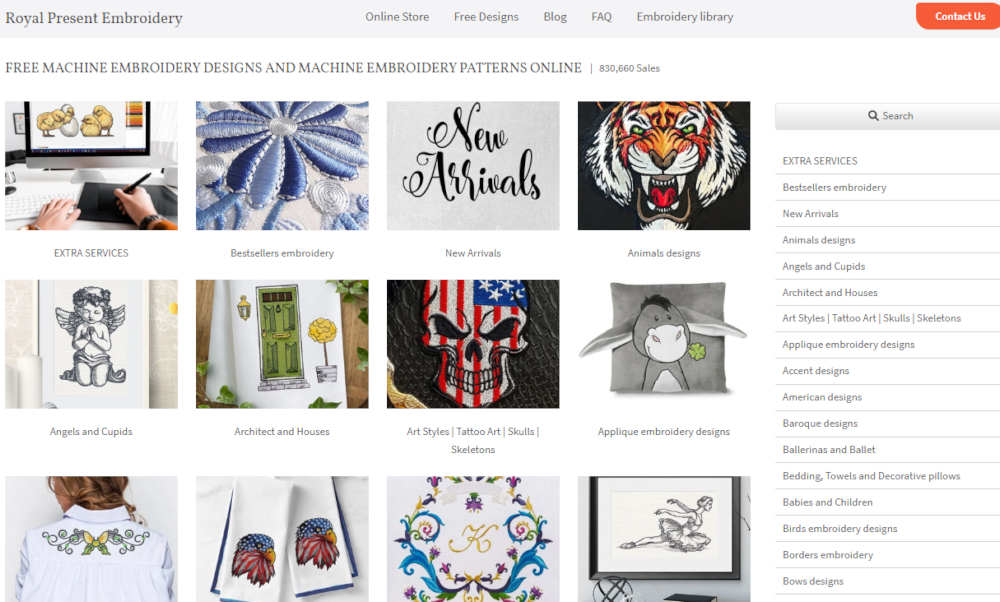
#3 Royal Present Embroidery – A Fusion of Artistry and Thread
As a dedicated embroidery enthusiast, I discovered the hidden treasure that is Royal Present Embroidery. The moment you visit their website, you are welcomed by an aura of mastery. Konovalova Ludmila, the founder and creative force, crafts a beautiful blend of aesthetics, sensitivity, and artistic skill. Her designs transcend mere patterns; they are enchanting narratives woven with affection.
Each design reflects Konovalova’s meticulous craftsmanship. Cutting-edge software guarantees precision, reducing jump stitches and enhancing stitch perfection. I personally experienced the perfection of her work when I downloaded one of Konovalova’s complimentary designs. It’s evident that she has mastered the art of digitizing designs.
How can I assert this? Well, she provides an exceptionally detailed set of instructions to assist you in sewing out the design. In fact, I have yet to come across a site that offers such comprehensive instructions!
Here’s what I mean:
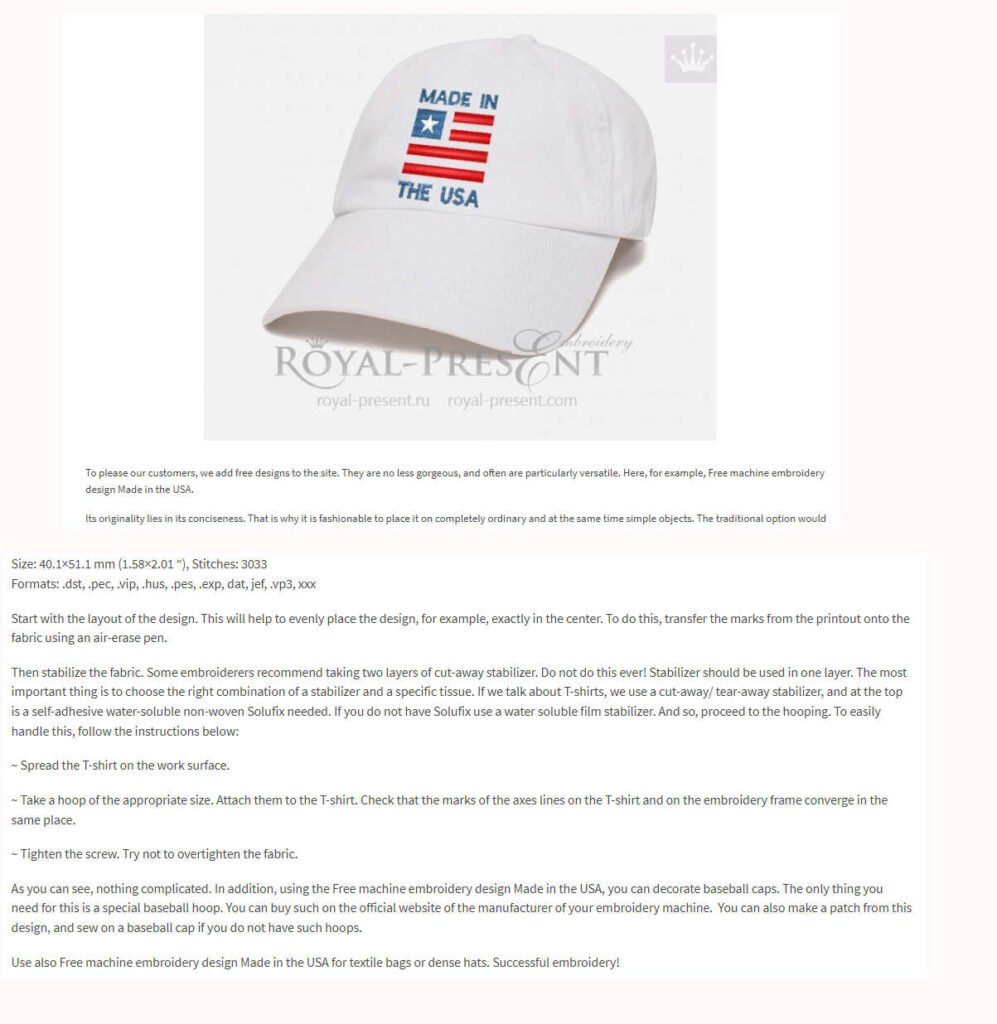
Royal Present Has a Treasure Trove of Embroidery Designs
The vast collection of designs covers a wide range of genres and themes. From sophisticated lace to playful animals, there’s a design for every project. Their dedication to diversity ensures that your creativity is limitless.
A Wealth of Knowledge on Embroidery Designs What I appreciate about this site is its effective use of blogging. There are posts dating back to 2014 covering a broad spectrum of topics on embroidery designs and the embroidery business. I found the post on how to attract customers for your business particularly insightful.
In conclusion, Royal Present Embroidery serves as a lighthouse of creativity, quality, and community in the embroidery world. Ludmila’s passion is evident in every stitch, inviting us all to delve into the artistry of thread.
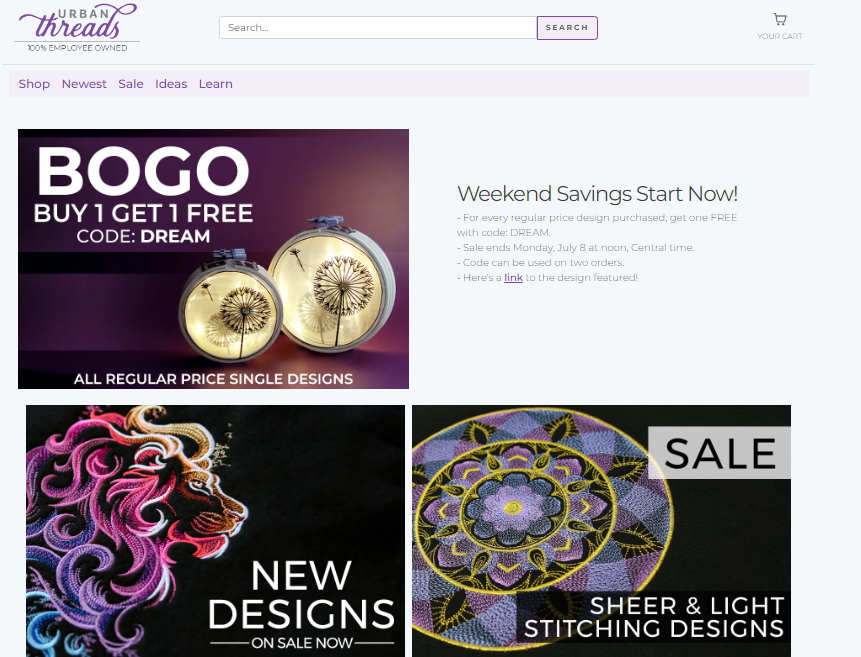
#4 Urban Threads – Unique Embroidery Designs and Experience
Have you had the chance to explore Urban Threads? This innovative embroidery site stands out with its unique designs and creative project ideas. For instance, they offer projects that are not only aesthetically pleasing but also glow in the dark.
Their designs break away from traditional motifs, offering mandala-style images ranging from lions to mushrooms.
Urban Threads also offers cutting-edge patches with humorous statements like, “Don’t half-ass anything; use your whole ass.”
It’s a refreshing take on embroidery!
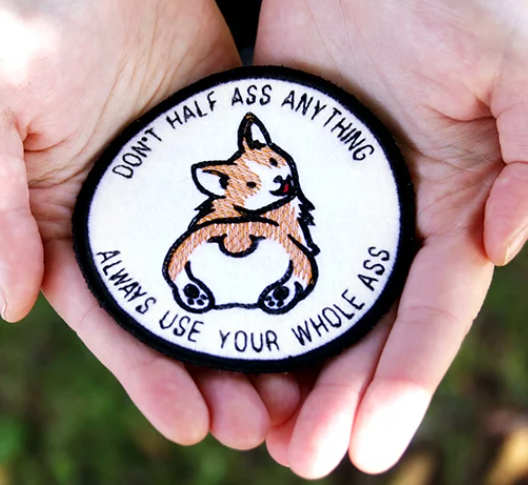
Their extensive collection of embroidery designs caters to both hand and machine embroidery enthusiasts. The style is distinctively edgy and unique, making browsing through their collection an enjoyable experience, even for those who aren’t particularly into embroidery.
But Urban Threads offers more than just designs. They provide a variety of tutorials for different projects, which can be beneficial even if you’re not specifically seeking embroidery-related content.
Don’t forget to check out their sales!
They offer stunning embroidery designs at discounted prices. Keep an eye out for their sales events. For example, they recently had a massive sale offering 65% off on regular-priced single designs.
One of the reasons I keep coming back to Urban Threads is their top-notch project tutorials. They also feature unique projects that I’ve never seen elsewhere.
For instance, while I make my own free-standing lace embroidered earrings, this site offers a tutorial on how to make embroidered leather ones.
In conclusion, if you’re in search of well-digitized and intriguing designs, Urban Threads is a must-visit. You won’t be disappointed!
Conclusion
The world of machine embroidery is vast and full of creative possibilities. With a plethora of online resources available, finding the perfect design for your next project has never been easier.
There are other very large sites online that offer a massive range of designs, from free samples to premium patterns.
However, more is not always better. Personally, I would rather stick to companies that offer fewer and better digitized resources because they offer a personal touch to everything they do.
So, whether you’re a beginner or an experienced embroiderer, these platforms cater to all skill levels and design preferences. Remember, the key to a successful embroidery project lies not only in the design you choose, but also in the love and creativity you pour into every stitch.
If you liked this post please share it with other embroidery enthusiasts. Also, if you have anything to say about this subject, please leave them in the comment section below – it would really make my day.

